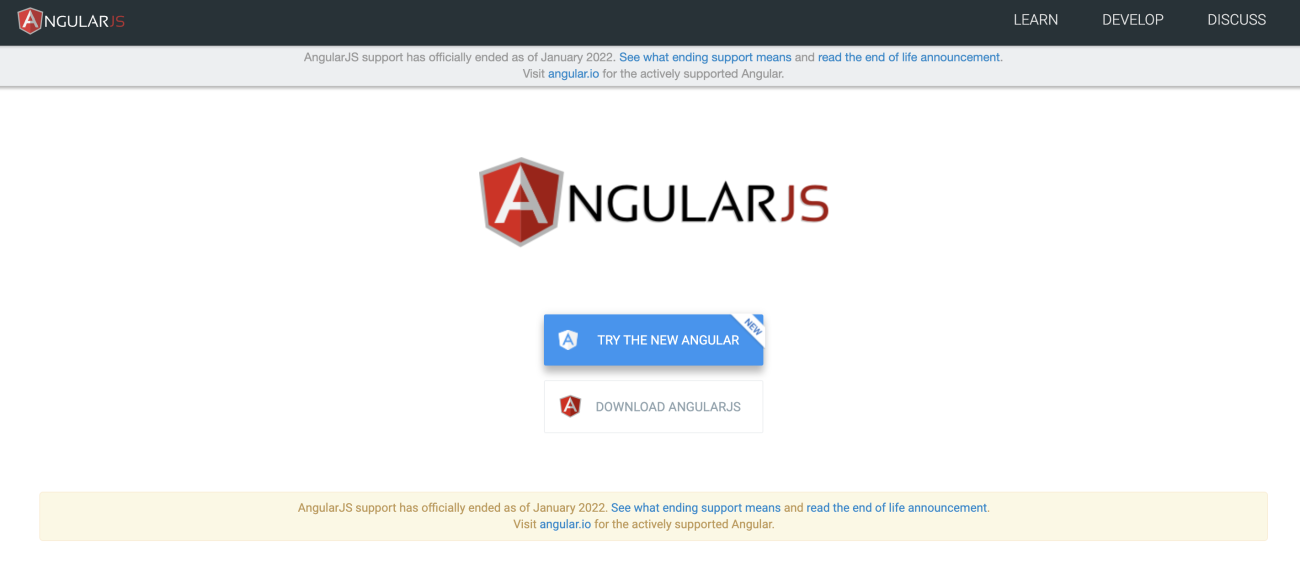|
Listen to this story
|
Angular is dying but hasn’t succumbed as yet. The birth of AngularJS created a stir back in 2010. It was around 2008-’09, when Misko Hevery, a former Google developer, started working on a side project to build web applications easily for an internal project. The side project is what eventually came to be known as AngularJS.
Hevery, along with a bunch of others, created a few more internal applications with AngularJS and released them as a separate open source project in 2010.
Once the developer community got its hands on it, it started building applications like the mobile UI toolkit Ionic Framework on top of Apache Cordova, mobile development framework. All these ingredients put together catapulted AngularJS to popularity with companies that could incorporate the entire toolset for both web and mobile app development.

From AngularJS to Angular
With time, the popularity of AngularJS started to wane. While JavaScript started to introduce developments and standards, AngularJS was left behind in the cold. The thing is, even though the Google community took Angular and brought it to large enterprise applications, it wasn’t really intended for these scenarios. Angular’s core team then wanted to tear down the framework completely and work ground up so as to not restrict themselves to the AngularJS’ previous design.
The rewriting of the entire second version of Angular caused a bit of a commotion. Finally, by 2018, the Angular framework got a new lease of life with several releases introducing better build sizes, stable APIs and an overall better performance. The successor to AngularJS was just known as Angular. Up until then, Angular was ahead of libraries like React, which still needed external projects to fill in the gaps in their project.
Ironically, despite the improvements, frameworks like React and Vue had improved to a great extent and overtook Angular’s position as the top JavaScript front-end framework. A Stack Overflow survey found that React and Vue emerged as the most-loved web frameworks in the community and Angular was lagging behind at third.
Source: Stack Overflow
New improvements made
By 2020, the community was audibly sighing over the death of Angular. Does Angular still stand a chance now?
In November this year, Angular dropped another version update, Angular 15, which promises much cleaner features for developers. Early reviews from coders show that the update is more refined, stable and extends supportability for a better experience for the community.
Like Angular 14, the new update has standalone components API which offers more stability. The Angular community can work with these standalone components and sync them with HttpClient, Angular Elements and others. The standalone API can be used to bootstrap an application in one component.
Angular 15 also comes with a router standalone API that can build a multi-route application. Angular Bundlers can also remove unused features while building which cuts down the code file size by 11%.
With the current update, debugging has become much easier on Angular applications. The team included stack traces to make it much simpler and cleaner as they wanted to be able to trace the development of the code rather than the libraries. This has improved the error messages that pop up. Prior to this, developers used to see error messages with a single line which made debugging even more difficult.
The team has also worked to refactor its component based on the Angular Material Design Components for the web applications. These components have better accessibility and comply with the Angular Material Design Specifications. The team has deprecated the old implementations of several components so developers can choose to legacy import instead.
For most developers’ their most favoured frameworks have great reusability of directives. The Angular team launched the directive composition API which was often demanded for by developers. The API increases the code usability and allows developers to push host elements with directives and optimise Angular. If developers use an Angular compiler, this becomes even easier.
Angular 15 has also improved upon the stable NgOptimisedImage directive that was introduced in the previous version for helping load images more efficiently. Now the feature can automatically upload a correctly sized image whenever the user requests thereby reducing the download time for images because of automatic srcset generation. The framework also removes the need for the user to input image dimensions and fills an image appropriately to its parent container. This ‘Fill Mode’ option is effective when the image dimensions are unknown to the user.
Down but not out
Developers, who have used the new version, admit that the release may not generate a massive hype but it has done enough to attract new users. It is standardised and has built-in features, is a mature and well-established framework that has been around for long which immediately translates into a strong community backing and enough resources and a solid team working on it. It looks like Google developers will continue working on it as the company itself uses Angular for thousands of its applications.
A user spoke about the new improvements saying, “I like the direction the Angular team took – introducing a functional approach and transforming it into features on top of OOP fundamentals. For me DI, tokenizing, abstracting things and building components in a reactive fashion — thanks to RxJS — is enough for me to create clean and scalable code. Angular delivers new things constantly and they can be used to improve the quality of projects, so I’d definitely recommend using Angular.”











































































